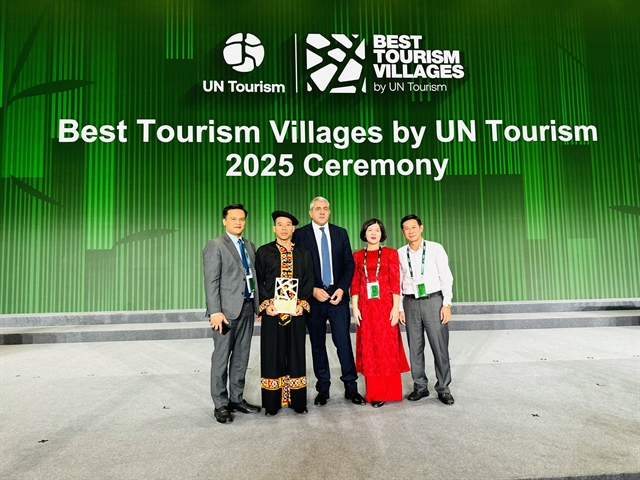Vietnam’s Lô Lô Chải Named Among UN Tourism’s Best Tourism Villages 2025

Hanoi, The Gulf Observer: Vietnam’s Lô Lô Chải Village in Tuyên Quang Province has been honored as one of the Best Tourism Villages 2025 by the United Nations World Tourism Organisation (UN Tourism). The recognition ceremony took place on October 17 in Huzhou City, Zhejiang Province, China.
Lô Lô Chải triumphed over 270 applications from 65 UN Tourism Member States to secure a spot among 52 winning villages from 29 countries across Africa, the Americas, Asia, Europe, and the Middle East. Another Vietnamese winner, Quỳnh Sơn Community-based Tourism Village in Lạng Sơn Province, also made it to the prestigious list, alongside destinations such as Agaete (Spain), Asuka (Japan), Kandelous (Iran), Pont-Croix (France), and Yangsuri (South Korea).
A Global Model for Sustainable Rural Tourism
Speaking at the ceremony, UN Tourism Secretary-General Zurab Pololikashvili highlighted the transformative power of tourism in advancing rural prosperity and inclusivity.
“Tourism can be a powerful tool to progress shared prosperity, inclusive growth, and territorial cohesion in rural areas. Our Best Tourism Villages 2025 highlight communities that are working to safeguard their cultural heritage, preserve their natural resources, and create economic opportunities through tourism,” he said.
“These villages show that by embracing tourism, they can promote social inclusion and build a future where no one is left behind.”
Launched in 2021 under the UN Tourism for Rural Development Programme, the Best Tourism Villages initiative recognizes and supports rural communities that use tourism to promote sustainable development, protect biodiversity, and celebrate cultural heritage.
Lô Lô Chải: A Model of Green and Community-based Tourism
In recent years, Tuyên Quang Province has focused on developing Lô Lô Chải in Lũng Cú Commune into a model of community-based, green, and sustainable tourism.
Local authorities have implemented a range of environmental initiatives, including improved waste management, reduction of single-use plastics, expansion of green spaces, and provision of clean water and sanitation facilities. These efforts are complemented by measures to preserve traditional architecture and landscapes through the use of eco-friendly materials and responsible visitor management to maintain ecological balance.
To ensure the community’s active participation, residents have received training in hospitality, food safety, environmental protection, and responsible tourism practices. The development of homestays, local cuisine, handicrafts, and agricultural experiences has provided stable employment and equitable income-sharing opportunities, particularly benefiting women and youth.
Promoting Vietnam’s Heritage to the World
Tuyên Quang has intensified promotional campaigns across digital platforms and established partnerships to introduce Lô Lô Chải to the international tourism market and the UN Tourism network. The province has also developed a system to monitor sustainable development indicators — covering environmental, cultural, and socio-economic aspects — to guide evidence-based policy and ensure harmony between tourism, community welfare, and nature conservation.
Looking ahead, the province plans to replicate the Lô Lô Chải model in other localities as part of its broader strategy to make tourism a key economic driver and achieve its sustainable development goals by 2035, with a vision to 2045.
Tuyên Quang will also promote its cultural and natural heritage by linking Lô Lô Chải with the Đồng Văn Karst Plateau UNESCO Global Geopark, recently recognized by the World Travel Awards (WTA) as Asia’s Leading Regional Cultural Destination 2025.
This integration aims to position Tuyên Quang as a sustainable cultural and tourism destination, showcasing Vietnam’s commitment to balancing economic growth, environmental stewardship, and cultural preservation on the global stage.


